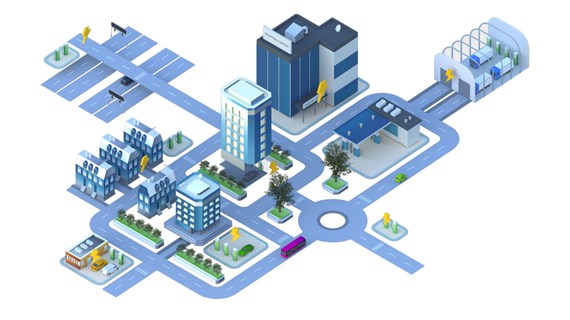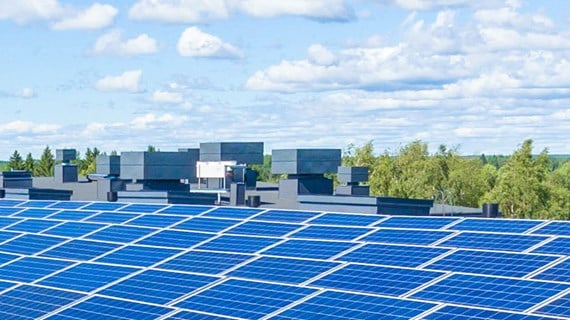We have put together a guide that highlights a few of the main requirements of the revised EPBD (EU/2024/1275).
Get your free copy

Highlights of the revised EPBD for property owners – the built environment plays an important part in the European Green Deal
The European Union (EU) is working towards being the first carbon-free continent with its European Green Deal program. The recently revised Energy Performance of Buildings Directive (EPBD) and Energy Efficiency Directive (EED) together, are key to ensuring the building sector plays its’ part in implementing the long-term objectives of reducing Europe's carbon emissions by 55% by 2030 and of the EU being climate neutral by 2050.
It is a well-known fact that major efforts are needed to reduce energy use in our existing buildings, many of which are old and in real need of energy renovation. In fact, according to the European Commission, 75% of the EU’s building stock is energy inefficient.
“The EU is aiming at more than doubling the current renovation rate”, says Ida Johansson, Director of Advisory Services at Caverion. “There is a significant need to both deepen renovations as well as reduce technical debt in buildings” she continues.
"
The to-be-formed national minimum energy performance standards will guide renovation rates of the existing building stock
“The new zero-emission standard will guide new builds to be even less energy intensive, simultaneously as the to-be-formed national minimum energy performance standards (MEPS) will guide renovation rates of the existing building stock. How quickly the market responds to the changes is to be seen, but even so, there is significant benefits to be had, both from an energy usage reduction perspective, as well as the financial benefits energy efficiency enhancing renovations often gain for building owners.”
The revision of the EPBD (EU/2024/1275) is one of the key elements of the European Green Deal. The revised EPBD was published in the Official Journal of the EU on May 8, 2024, and entered into force on May 28, 2024. The next step is the implementation of the national laws and regulations that will bring the requirements into force in the EU member countries.
Here are a few highlights of the revised EPBD. We have also put together an easy-to-read guide about the main changes of the revised EPBD for you, you can download your free copy here.
A zero-emission standard for new buildings
The requirements for zero-emission buildings are set out in the Article 11 of the directive. Basically, zero-emission buildings are buildings with very low energy demand, zero on-site carbon emissions from fossil fuels and zero or a very low amount of operational greenhouse gas emissions.
Buildings need to be zero-emission buildings by:
- 1 January 2028: New buildings owned by public bodies,
- 1 January 2030: All new buildings.
Five main areas with partly changed requirements
These five main areas are: 1) energy renovations, 2) automation, 3) mobility, 4) solar energy and, 5) authority requirements. And here are a few highlights of those partly changed requirements.
Energy renovations
According to Article 9 of the directive, energy renovations must be implemented in non-residential buildings according to the newly developed minimum energy performance standards (MEPS), set by each EU member country. The worst performing buildings must be renovated as following:
- 16% of the building stock by 2030,
- 26% of the building stock by 2033.
Automation
According to Article 13, a non-residential building must be equipped with building automation and control systems, by the following dates, depending on the effective rated output of its heating systems, air-conditioning systems, combined heating and ventilation systems, or combined air-conditioning and ventilation systems:
- By 31 December 2024: with an effective rated output over 290kW.
- By 31 December 2029: with an effective rated output over 70kW.
Mobility
The directive pushes towards more sustainable mobility and built environment to support it. Article 14 of the directive contains several detailed requirements for the number of charging points for different building types, based on the number of parking spaces. The requirements also apply to conduits or ducts for electrical cables and requirements for bicycle parking spaces.
Solar energy
Under Article 10 of the directive, all new buildings shall be designed to optimise the solar energy production potential. The directive also states when solar panels must be installed on existing buildings. For example, solar panels must be installed by 31 December 2027 on existing non-residential over 500 sqm that are majorly renovated, undergo an action requiring a permit, roofing works or installation of building systems.
Authority requirements
Last but not least, there are some changes to authority requirements. For example, according to the Article 23, heating, ventilation and air-conditioning systems (including combinations) must be inspected:
- every 5 years if the effective rated output is above 70kW,
- every 3 years if the effective rated output is above 290kW.
We have the expertise and technologies needed for improving the energy efficiency of your building and for making sure your building fulfils the newly revised EPBD’s requirements. Let’s work together towards an #energywise built environment. Contact us – we are happy to help!
Read more on the revised EPBD (EU/2024/1275) and the energy efficiency and amending regulation (EU/2023/1791).








